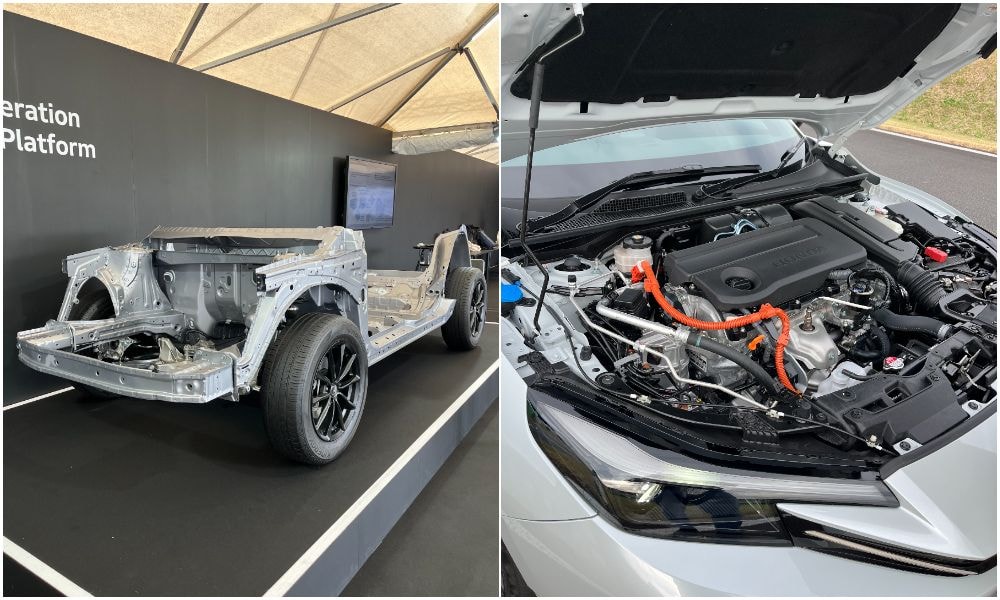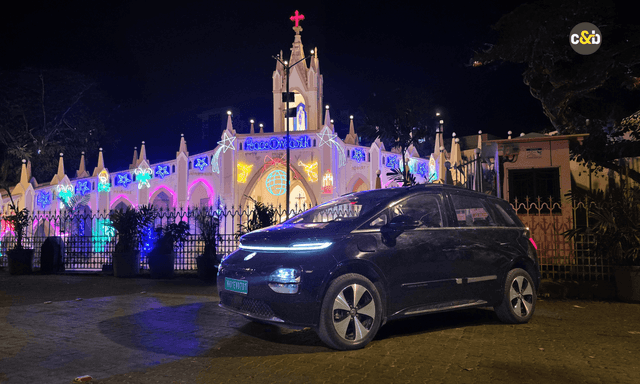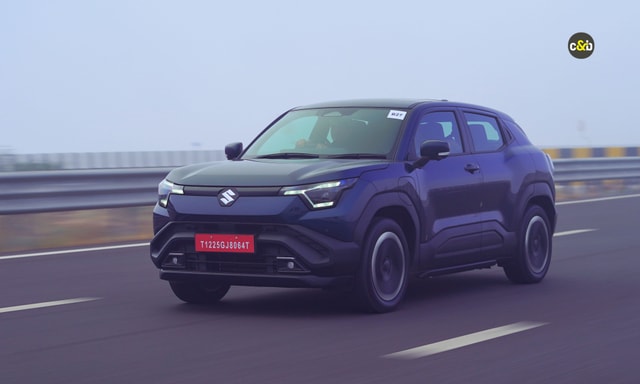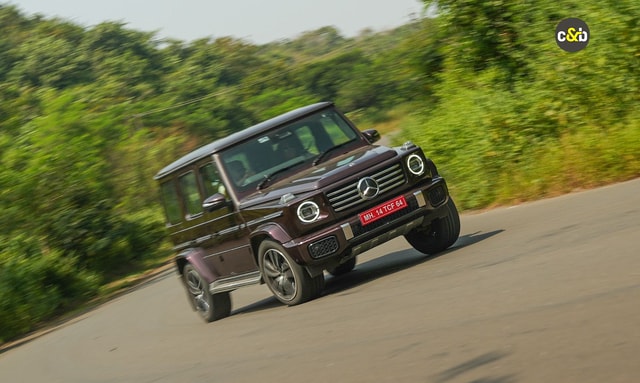Honda Showcases New Hybrid And EV Technologies For Models Due By 2030

- New strong hybrid and electric vehicles to co-exist
- Focus on driveability as much as reducing emissions
- Improvements across the range – compact EVs to big SUVs
Honda recently hosted an automotive technology workshop for a select media group at its R&D centre at Tochigi, near Tokyo. It offered a detailed glimpse into the next-generation technologies set to power its vehicles scheduled for release in the second half of this decade. Broadly, these include a platform for future small and mid-size petrol/electric hybrids (including the next-gen City and Elevate), a new strong hybrid system for larger models (CR-V and above) and technologies for compact electric cars previewed by the Super One concept at the just-concluded 2025 Japan Mobility Show (JMS).
Also Read: Honda 0 α (Alpha) Electric SUV Confirmed For India Launch In 2027
While the new ‘big’ hybrid platform improves efficiency, performance, and packaging flexibility the next-gen hybrid system is aimed to deliver better performance and superior towing capability than standard gasoline cars, while improving fuel economy.
Super-ONE prototype built to demonstrate how EVs can be distinctive and fun.
Interestingly, even the Super-ONE Prototype, which signalled Honda's intent to provide feasible urban mobility option gave a sense of the nimbleness and agility akin to a ‘hot hatch’.
Next-Generation Honda Midsize Platform
This new platform is work-in-progress to realise increased body rigidity while reducing weight. A high level modular architecture will enable greater parts commonality and control production costs, says Honda. This will enhance the “joy of driving” – something that the car maker was historically known for.
Honda claims to have created a benchmark for driving stability with this shift to rigidity management. This will dramatically enhance vehicle performance. With optimised body rigidity, overall weight can now be reduced by using suitable material at specific places. Also, Honda engineers are said to have developed a technique that allows the body to flex, marginally, under limits. This will help the car can control the load on each tyre, eg. during cornering, for better grip. This new platform is thus 90 kg lighter than Honda's current architecture. This will mean better fuel economy and a more responsive feel.
Lightweight midsize platform promises to boost performance and efficiency.
The design separates modules like the engine room (which can be common across cars) from say, rear cabin. In fact, it is aiming for over 60 per cent parts commonality across all models that will use this platform thus reducing development as well as eventual production costs.
Some of the advanced systems incorporated include Motion Management System, which employs tech from Honda's robotics development and enables vehicle control systems to match driver's intent. Agile Handling Assist (AHA) that builds on the electronics control systems currently used in models such as the Accord and Prelude, and a new pitch control technology that supports faster cornering regardless of road conditions.
Also Read: Honda Super-ONE Electric Hatchback Revealed In Near Production Form
Next-Generation Honda Large Hybrid System
This is more for the US market. This system will allow more powerful driving performance with higher towing capacity, which is commonly needed there. All of these while keeping emissions in check, which is one of the issues highlighted with current lot of big, popular American SUVs and pick-ups.
New hybrid system for big Hondas tuned to deliver punchy performance.
For this, Honda has developed a new V6 engine that can meet future environmental regulations while offering a higher fuel efficiency resulting in fewer fuel stops. For this it will also offer new electric drive units and a battery pack engineered for better range than on current models. Also, cost-effectiveness. Honda says the aim is to improve acceleration by 10 per cent and fuel efficiency by 30 per cent.
Honda Compact EVs
The Japanese car maker’s first production EV was the Honda e based on the Urban EV concept. Last year it showcased a compact production EV that was meant for commercial purpose. Called N-VAN e:, it was built on a Kei car platform (sub 3.5m long) with the same name. But the Super One concept that debuted this year at the JMS, takes this a bit further and also showcases Honda’s intent of making a significantly different urban EV that doesn’t look like a me-too effort.
The production model, built under the "e: Dash BOOSTER” concept, is designed to transform daily travel into an exhilarating and uplifting experience by offering an enjoyable drive complete with simulated noise. Honda hopes to take it to showrooms in Japan by as early as 2026. This will be followed by launches in the UK and other Asian countries where demand for nimble, small EVs is high. Currently, India is not on the agenda with this one.
Super-ONE hatchback is currently not on the agenda for India.
A lightweight body and ICE-inspired drive were highlights of the pre-production model that we drove. While battery tech will be core to this like an EV, Honda engineers seem to have not compromised on drive dynamics. The key structural elements that they have focused on include an optimised body that is built upon a lightweight foundation of its previous N Series platform. Honda claims this will be the lightest body in the A segment. It uses a dedicated chassis with widened tread and fenders for stability. Also, lower centre of gravity compared to a similarly proportioned ICE car as the heaviest component – a slim battery pack – sits low and centrally in the underbody.
The Super-ONE features a "Boost Mode”. This instantly increases power output on demand, unleashing the full performance potential of the power unit. For effect, a simulated 7-speed transmission effect is generated alongside a powerful engine ‘sound’. The gearshift feel does mimic a conventional automatic. It calculates simulated engine speed (estimated RPM) and gear positions in real-time based on accelerator position and driving conditions. The simulation goes 4D by reproducing the physical feedback of a traditional vehicle, including the "kickdown" shock not only during acceleration but also while decelerating – similar to engine-braking.
Future’s Joyful?
We’d like to believe so. Honda is trying to improve all aspects of its hybrid system and the EV platform, with a plan to start adopting them from a group of next-generation models to be introduced globally from 2027 onwards. As mentioned on carandbike.com earlier, India is now one of the three focus markets for Honda alongside Japan and the USA. A total of 10 new models are earmarked for launch in the next few years with 7 of them being SUVs. These will be a mix of global imports as well as made-for-India models that will be manufactured in India.
Production version of 0 Alpha will be launched in India in 2027.
We are given to believe that some technologies on display at the Tech Day, such as the H-RV small hybrid system and products such as Prelude sportscar may have a chance on being seen on Indian roads in the future soon. The latter more of a halo product approach rather than any number game. Moreover, the Tech Day displays must give hope to hardcore Honda fans who might be ruing the ‘domestication’ of the Japanese brand that was born out of a love for performance. Although the action starts only in 2027, Honda is one brand to watch out for. As they say, better late than never.
Trending News
 3 mins readWill The Kawasaki W230 Be Launched In India?
3 mins readWill The Kawasaki W230 Be Launched In India?
Latest News
 car&bike Team | Dec 24, 2025Updated Bajaj Pulsar 150 Launched At Rs 1.09 Lakh: Gets LED Lighting, New ColoursThe Pulsar 150 is offered in three variants with prices topping out at Rs 1.15 lakh (ex-showroom).2 mins read
car&bike Team | Dec 24, 2025Updated Bajaj Pulsar 150 Launched At Rs 1.09 Lakh: Gets LED Lighting, New ColoursThe Pulsar 150 is offered in three variants with prices topping out at Rs 1.15 lakh (ex-showroom).2 mins read Janak Sorap | Dec 24, 20252026 Kawasaki Ninja 650 Launched at Rs 7.91 LakhWith E20 compliance, the 2026 Ninja 650 receive a new colour update and a premium price tag.1 min read
Janak Sorap | Dec 24, 20252026 Kawasaki Ninja 650 Launched at Rs 7.91 LakhWith E20 compliance, the 2026 Ninja 650 receive a new colour update and a premium price tag.1 min read Jafar Rizvi | Dec 24, 2025Listed: Car Manufacturers That Will Hike Prices From January 2026Based on the announcements made so far, the price increase across car models is expected to range between 2 and 3 per cent.3 mins read
Jafar Rizvi | Dec 24, 2025Listed: Car Manufacturers That Will Hike Prices From January 2026Based on the announcements made so far, the price increase across car models is expected to range between 2 and 3 per cent.3 mins read car&bike Team | Dec 24, 2025KTM RC 390 Discontinued Globally, Remains On Sale In IndiaThe KTM RC 390 will continue to be offered on sale in India, where it is manufactured and there’s still strong demand for the model.2 mins read
car&bike Team | Dec 24, 2025KTM RC 390 Discontinued Globally, Remains On Sale In IndiaThe KTM RC 390 will continue to be offered on sale in India, where it is manufactured and there’s still strong demand for the model.2 mins read car&bike Team | Dec 23, 2025India Bike Week 2025 In Pictures: Highlights From Edition 12The 12th Edition of IBW was held on December 19 and 20, and if you missed this year’s festival, here is a recap of all that happened.3 mins read
car&bike Team | Dec 23, 2025India Bike Week 2025 In Pictures: Highlights From Edition 12The 12th Edition of IBW was held on December 19 and 20, and if you missed this year’s festival, here is a recap of all that happened.3 mins read Amaan Ahmed | Dec 23, 2025Tata To Enter Rs 40 Lakh Passenger Car Market With First Avinya Electric SUV In End-2026Set to be one of three EV launches from Tata Motors next year, the first in the Avinya series of electric vehicles will catapult the Pune-based carmaker into uncharted market territory, as it will be the most expensive Tata yet.1 min read
Amaan Ahmed | Dec 23, 2025Tata To Enter Rs 40 Lakh Passenger Car Market With First Avinya Electric SUV In End-2026Set to be one of three EV launches from Tata Motors next year, the first in the Avinya series of electric vehicles will catapult the Pune-based carmaker into uncharted market territory, as it will be the most expensive Tata yet.1 min read
 Jafar Rizvi | Dec 24, 2025MG Windsor EV 38 kWh Long-Term Report: IntroductionThe Windsor EV has joined our garage, and before it settles into daily duty, I took it out to get a sense of what living with an electric car is like.4 mins read
Jafar Rizvi | Dec 24, 2025MG Windsor EV 38 kWh Long-Term Report: IntroductionThe Windsor EV has joined our garage, and before it settles into daily duty, I took it out to get a sense of what living with an electric car is like.4 mins read Seshan Vijayraghvan | Dec 23, 20252026 Kia Seltos Review: Formula Is Spot On, But Is The Timing Right?The 2nd-gen Kia Seltos has arrived, but it has the challenge of facing strong rivals like the Victoris and Sierra. The question is simple - Does it still have what it takes?9 mins read
Seshan Vijayraghvan | Dec 23, 20252026 Kia Seltos Review: Formula Is Spot On, But Is The Timing Right?The 2nd-gen Kia Seltos has arrived, but it has the challenge of facing strong rivals like the Victoris and Sierra. The question is simple - Does it still have what it takes?9 mins read Seshan Vijayraghvan | Dec 22, 20252026 Tata Harrier & Safari 1.5 Hyperion Review: By The Power Of Petrol!The new Tata Harrier and Safari petrol packs a new 1.5-litre TGDI Hyperion engine, but is it an ideal alternative to the diesel version?7 mins read
Seshan Vijayraghvan | Dec 22, 20252026 Tata Harrier & Safari 1.5 Hyperion Review: By The Power Of Petrol!The new Tata Harrier and Safari petrol packs a new 1.5-litre TGDI Hyperion engine, but is it an ideal alternative to the diesel version?7 mins read Bilal Firfiray | Dec 19, 2025Maruti Suzuki e-Vitara Review: Worth The Wait?After a long wait, the first-ever electric Maruti Suzuki is here. It’s the e-Vitara, and it comes with a few promises. But arriving this late, is it worth the wait? Or is it a case of too little, too late?9 mins read
Bilal Firfiray | Dec 19, 2025Maruti Suzuki e-Vitara Review: Worth The Wait?After a long wait, the first-ever electric Maruti Suzuki is here. It’s the e-Vitara, and it comes with a few promises. But arriving this late, is it worth the wait? Or is it a case of too little, too late?9 mins read Bilal Firfiray | Dec 18, 2025Mercedes-Benz G450d: The Subtle Power of EvolutionThe Mercedes-Benz G 450d evolves subtly with more power, improved efficiency, and modern tech, while staying true to the timeless G-Class design. And character.4 mins read
Bilal Firfiray | Dec 18, 2025Mercedes-Benz G450d: The Subtle Power of EvolutionThe Mercedes-Benz G 450d evolves subtly with more power, improved efficiency, and modern tech, while staying true to the timeless G-Class design. And character.4 mins read




































































































































